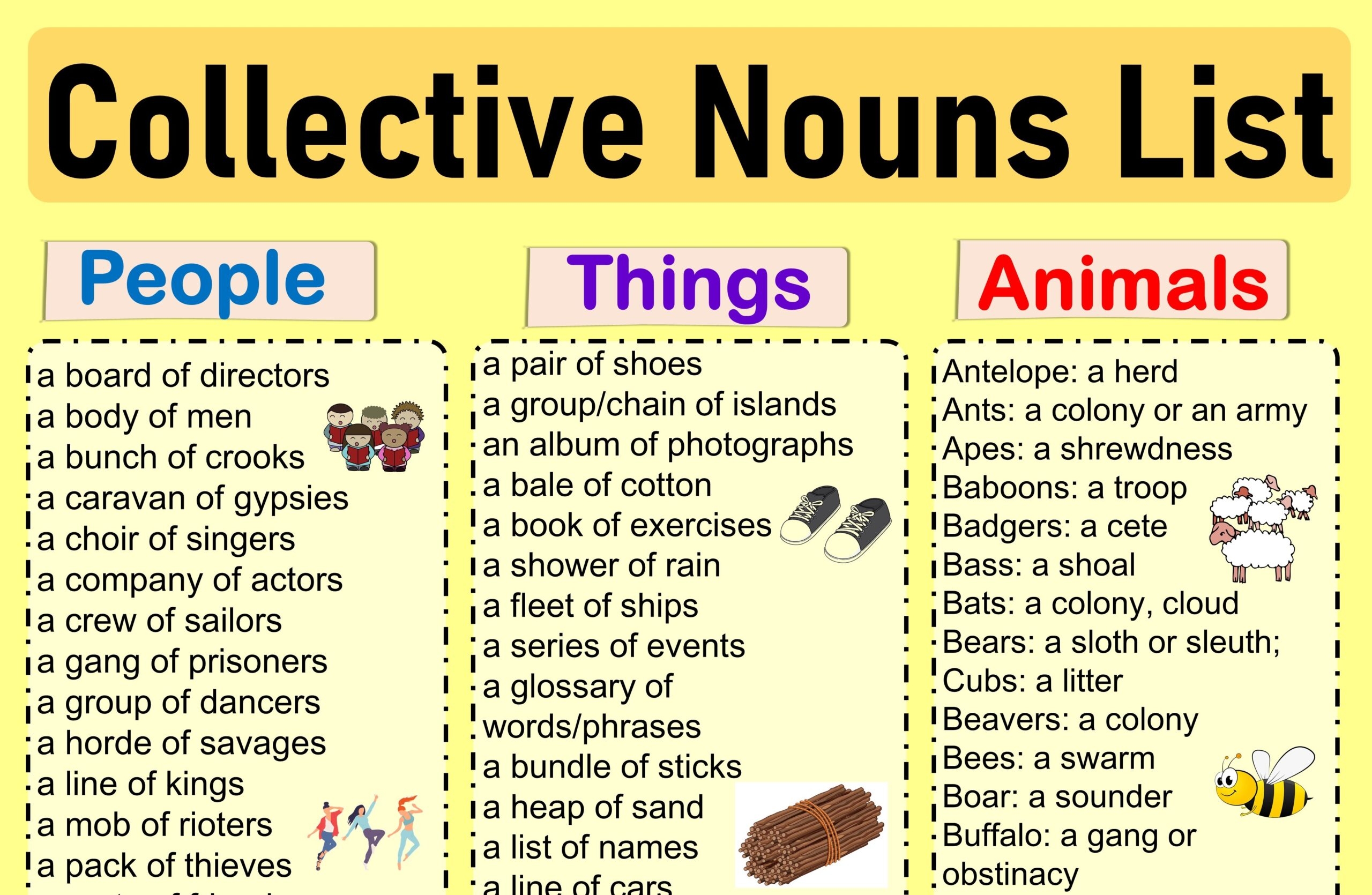Have you ever heard of a murder of crows or a pride of lions? These unique and sometimes whimsical collective names for animals have been used for centuries to describe groups of certain species. They add a touch of creativity and character to the animal kingdom, giving us a glimpse into the rich tapestry of language and culture.
Collective names for animals are not only fun to say, but they also serve a practical purpose in communication. By using specific terms for groups of animals, we can easily differentiate between different species and their social structures. This can be particularly useful for scientists, researchers, and wildlife enthusiasts who study animal behavior and habitats.
List of Collective Names for Animals
Here are some examples of collective names for animals:
1. A murder of crows
2. A pod of dolphins
3. A herd of elephants
4. A pack of wolves
5. A swarm of bees
Each of these collective names evokes a specific image or characteristic associated with the group of animals. For example, a “gaggle of geese” brings to mind a noisy and chaotic gathering, while a “pride of lions” conjures images of strength and unity.
These collective names often reflect the behavior, appearance, or habits of the animals in question. They can vary from the mundane to the poetic, offering us a glimpse into the natural world and the ways in which humans have sought to understand and categorize it.
Next time you encounter a group of animals, take a moment to consider their collective name. You may find that it adds a new dimension to your appreciation of the creatures around you, and a deeper understanding of their place in the world.
In conclusion, collective names for animals are a fascinating aspect of language and culture that enrich our understanding of the natural world. From a murder of crows to a pod of dolphins, these names offer us a unique glimpse into the social structures and behaviors of different species. So the next time you spot a group of animals, remember to use their collective name and celebrate the diversity and beauty of the animal kingdom.
